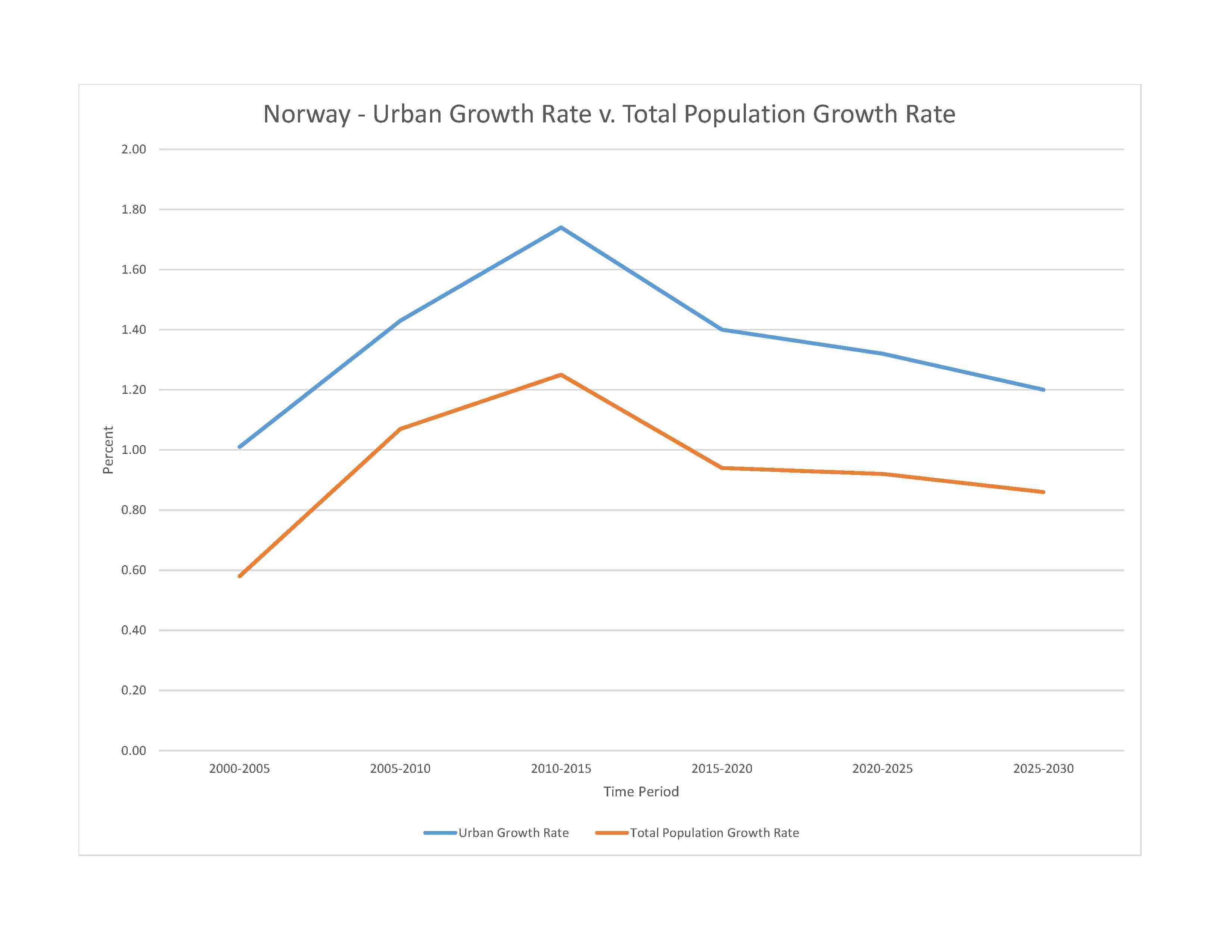
5,597,924 (2023 est.)
noun: Norwegian(s)
adjective: Norwegian
Norwegian 81.5% (includes about 60,000 Sami), other European 8.9%, other 9.6% (2021 est.)
Bokmal Norwegian (official), Nynorsk Norwegian (official), small Sami- and Finnish-speaking minorities; note - Sami has three dialects: Lule, North Sami, and South Sami; Sami is an official language in nine municipalities in Norway's three northernmost counties: Finnmark, Nordland, and Troms
major-language sample(s):
Verdens Faktabok, den essensielle kilden for grunnleggende informasjon. (Norwegian)
The World Factbook, the indispensable source for basic information.
Norwegian audio sample:
Church of Norway (Evangelical Lutheran - official) 67.5%, Muslim 3.1%, Roman Catholic 3.1%, other Christian 3.8%, other 2.6%, unspecified 19.9% (2021 est.)
Norway is a trendsetter country in gender equality, especially in workforce participation. Of particular value to families are the child and parental leave benefits. This supplement is a monthly allowance paid to families from a month after birth until the child reaches 18 to defray some of the costs of raising children. This is helpful to families with young children where the mother works limited hours. The parental leave benefit is available to qualified mothers in a child’s first year, enabling parents to share at-home childcare for up to 49 weeks at full salary (or 59 weeks with 80% of their salary). Afterward, parents can put their child in high-quality subsidized daycare or receive funding toward private child care or as compensation for one parent staying home to care for their child.
Norway was originally a country of emigration with almost 850,000 Norwegians going abroad between 1825 and 1945. At the turn of the 20th century, most Norwegians emigrated temporarily to work in the US. Immigrants to Norway in the 1960s were mostly from neighboring Nordic countries, with whom they shared a common labor market. By the end of the 1960s, with a strong economy and population shortage, Norway admitted guest workers from Pakistan, Morocco, then Yugoslavia, and Turkey. The labor migrants were expected to be temporary, but many settled in Norway. Eventually, Norway imposed immigration restrictions and the majority of migrants came in as refugees or for family reunification. Beginning in the 1990s, Norway’s migration policy aimed at achieving integration – including language instruction and integration into the job market – as well as combatting racism and xenophobia.
0-14 years: 17.83% (male 510,835/female 487,126)
15-64 years: 64% (male 1,842,794/female 1,739,688)
65 years and over: 18.18% (2023 est.) (male 474,878/female 542,603)
total dependency ratio: 54
youth dependency ratio: 26.1
elderly dependency ratio: 27.9
potential support ratio: 3.6 (2021 est.)
note: data include Svalbard and Jan Mayen Islands
total: 40.6 years (2023 est.)
male: 39.9 years
female: 41.4 years
0.6% (2023 est.)
10.4 births/1,000 population (2023 est.)
8.2 deaths/1,000 population (2023 est.)
3.8 migrant(s)/1,000 population (2023 est.)
most Norwegians live in the south where the climate is milder and there is better connectivity to mainland Europe; population clusters are found all along the North Sea coast in the southwest, and Skaggerak in the southeast; the interior areas of the north remain sparsely populated
urban population: 84% of total population (2023)
rate of urbanization: 1.32% annual rate of change (2020-25 est.)
note: data include Svalbard and Jan Mayen Islands

1.086 million OSLO (capital) (2023)
at birth: 1.05 male(s)/female
0-14 years: 1.05 male(s)/female
15-64 years: 1.06 male(s)/female
65 years and over: 0.88 male(s)/female
total population: 1.02 male(s)/female (2023 est.)
29.8 years (2020 est.)
note: data is calculated based on actual age at first births
2 deaths/100,000 live births (2020 est.)
total: 1.8 deaths/1,000 live births (2023 est.)
male: 2.1 deaths/1,000 live births
female: 1.5 deaths/1,000 live births
total population: 83 years (2023 est.)
male: 81.4 years
female: 84.7 years
1.57 children born/woman (2023 est.)
0.76 (2023 est.)
N/A
improved: urban: 100% of population
rural: 100% of population
total: 100% of population
unimproved: urban: 0% of population
rural: 0% of population
total: 0% of population (2020 est.)
11.4% of GDP (2020)
5.04 physicians/1,000 population (2020)
3.5 beds/1,000 population (2018)
improved: urban: 100% of population
rural: 100% of population
total: 100% of population
unimproved: urban: 0% of population
rural: 0% of population
total: 0% of population (2020 est.)
23.1% (2016)
total: 6.05 liters of pure alcohol (2019 est.)
beer: 2.63 liters of pure alcohol (2019 est.)
wine: 2.23 liters of pure alcohol (2019 est.)
spirits: 1 liters of pure alcohol (2019 est.)
other alcohols: 0.19 liters of pure alcohol (2019 est.)
total: 16.2% (2020 est.)
male: 17% (2020 est.)
female: 15.4% (2020 est.)
N/A
50.2% (2023 est.)
5.9% of GDP (2020 est.)
total population: NA
male: NA
female: NA
total: 18 years
male: 18 years
female: 19 years (2020)
NOTE: The information regarding Norway on this page is re-published from the 2024 World Fact Book of the United States Central Intelligence Agency and other sources. No claims are made regarding the accuracy of Norway 2024 information contained here. All suggestions for corrections of any errors about Norway 2024 should be addressed to the CIA or the source cited on each page.
This page was last modified 04 May 24, Copyright © 2024 ITA all rights reserved.